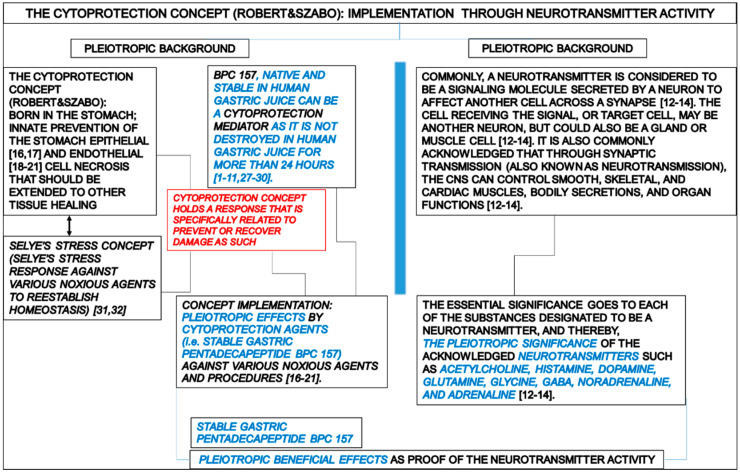Figure 1.
The cytoprotection concept (Robert and Szabo): implementation via neurotransmitter activity. The stable gastric pentadecapeptide BPC 157 pleiotropic beneficial activity and its possible relations with neurotransmitter activity based on the general significance of Robert’s and Szabo’s stress concept and Selye’s stress concept leading to the pleiotropic effects by cytoprotection agent application (BPC 157 acts as a cytoprotection mediator, and thereby pleiotropic significance), and pleiotropic significance of acknowledged neurotransmitters (i.e., acetylcholine, histamine, dopamine, glutamine, glycine, GABA, noradrenaline, and adrenaline). For the stable gastric pentadecapeptide BPC 157, pleiotropic beneficial effects can be used as proof of the neurotransmitter activity [1,2,3,4,5,6,7,8,9,10,11,12,13,14,16,17,18,19,20,21,27,28,29,30,31,32]. All these points may be supported by its special interaction with various molecular pathways [8,11,75,115,116,117,118,119,120,121,122,123], especially with the nitric oxide (NO)-system [121,122,123,124,125,126,127,128,129,130] as a whole. Note, in general, since the very beginning, the concept of cytoprotection did not consider the neurotransmitter activity as the basis for the cytoprotective effects of the implemented agents (i.e., prostaglandins [16,17], sulfhydryl [141], somatostatin [142], dopamine [143]).

